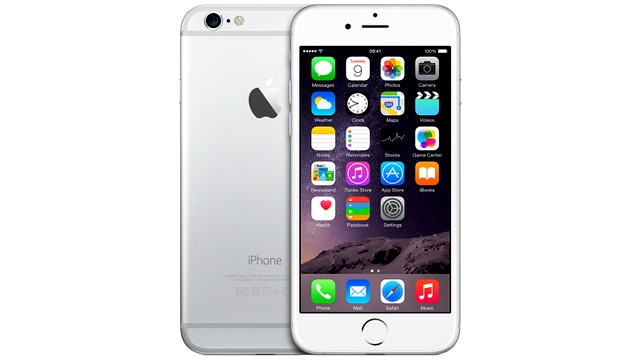
The growth of mobile is considered to be the biggest shift in technology since the arrival of the internet. IDC’s mobile phone forecast predicts that total sales of smartphones will reach 1.2 billion units before the end of the year, a 23.1 percent increase over 2013. With the use of mobile devices now intrinsically linked to everyday life, it’s easy to see why British companies busy building apps for smartphones and tablets are forecast to generate £4bn in revenues this year.
The launch of the iPhone 6 and 6 Plus on September 9 created great commotion. Choose any major city, anywhere in the world and the scenes outside of Apple Stores on 9 September were the same. Hordes of consumers of all ages, social standings and demographics spent hours, and in some cases days, queuing as they waited to get their hands on the latest offering. In Australia Jack Cooksey, the first person to buy the iPhone 6, inadvertently crash tested it live on national television -- which has since gone viral. If we put the initial consumer excitement and hype to one side, the introduction of Apple’s largest ever handsets does present some very positive features. You have a larger screen, which obviously means more display space. The larger screen also means bigger virtual buttons within apps which (from a marketing perspective) enables organizations to drive more types of engagement on screen without cluttering the display. However, all of these new features and opportunities in the new handsets also inevitably complicate things for mobile app developers.
Prior to the introduction of the new handsets, the Apple mobile app developers’ task was far easier than that of the Android mobile app developer who was already trying to develop new apps for thousands of devices with differing screen sizes, form factors and resolutions. Although the iPhone has had a slight evolution in size from the original device the iPhone 6 is considered Apple’s first 'big' phone. Where before its arrival app developers simply had one app to design with one interface and display, now it is a completely different story.
iOS app developers vs. the iPhone(s)
The iPhone 6 Plus is approaching the size of a small tablet. A simple "upscale" of an existing app will not be ideal for optimal user experience, it will require careful design of the app interface to deliver the best results for the consumer.
On-screen controls now need to be big enough for easy manipulation whilst blending in with the rest of the displayed elements. Controls may also need to be moved to a location that makes more sense on the larger iPhones without compromising touch control.
Because the App Store requires all apps to work on all screens starting with and including iPhone 4s, which has a 3.5inch screen as opposed to the 4.7 inch display on the iPhone 6 and 5.5 inch on the iPhone 6 Plus, all of this redesign must be done in a way that doesn’t compromise how the app works on smaller iPhones. This is a big task as pixel-perfect screen designs have been a trademark of iOS development up to this point, however the shorter dimensions of the iPhone 4s makes it more difficult to support when it comes to screen designs. Developers will need to maximize the advantages of the additional screen space provided by the new devices whilst also ensuring they scale well to the shorter dimensions of the 4s.
Prior to the introduction of the iPhone 6, developers predominantly created apps to be used in portrait mode due to device usage patterns. However, the increased size of the screen on the new handset, which can no longer be easily managed with one hand, necessitates that apps also be developed for use in landscape mode, thus adding a layer of difficulty to development.
Overall the introduction of larger mobile phones is positive for organizations looking to market their apps on these devices -- especially as today it is less about telephoning and more about reading, writing and sharing. Let’s face it, traditional mass media will soon be overshadowed by mobile. In fact, according to research company Nielsen, 89 percent of consumer media time is now spent in mobile apps. Therefore, it is evident that larger handsets will help generate more likes, shares comments or views for organizations’ marketing campaigns.
To compound this issue, the release of iOS 8 in September was met with less than rapturous applause. Many developers were concerned that the increased fragmentation in the iOS ecosystem would result in longer development times and increased cost. Add to this its initial instability which saw a crash rate that far exceeded that of iOS 7 and its clear to see why there was initial concern.
Clearly, getting an app interface right for both large and small iPhones is an imperative as users are incredibly fickle. If the user experience is not a positive one consumers will simply not interact with the app. Marketers must be aware that if consumers don’t like the way a favorite iPhone app works on the new models, they will simply move on to something else.
Moving forward the industry will continue to evolve. Many forget that mobile is largely still in its infancy and there is no doubt that mobile app developers can expect further market fragmentation. One thing is for certain, a one-size fits all approach certainly won’t work anymore. The key for organizations will be to find mobile app developers with the necessary experience to design apps that are future proofed. App redesign involves a lot of work, and the new multiple requirements of large iPhones and the new operating system will just add to the mix of issues that developers must address.
By Paul Swaddle, CEO, Pocket App
Published under license from ITProPortal.com, a Net Communities Ltd Publication. All rights reserved.

